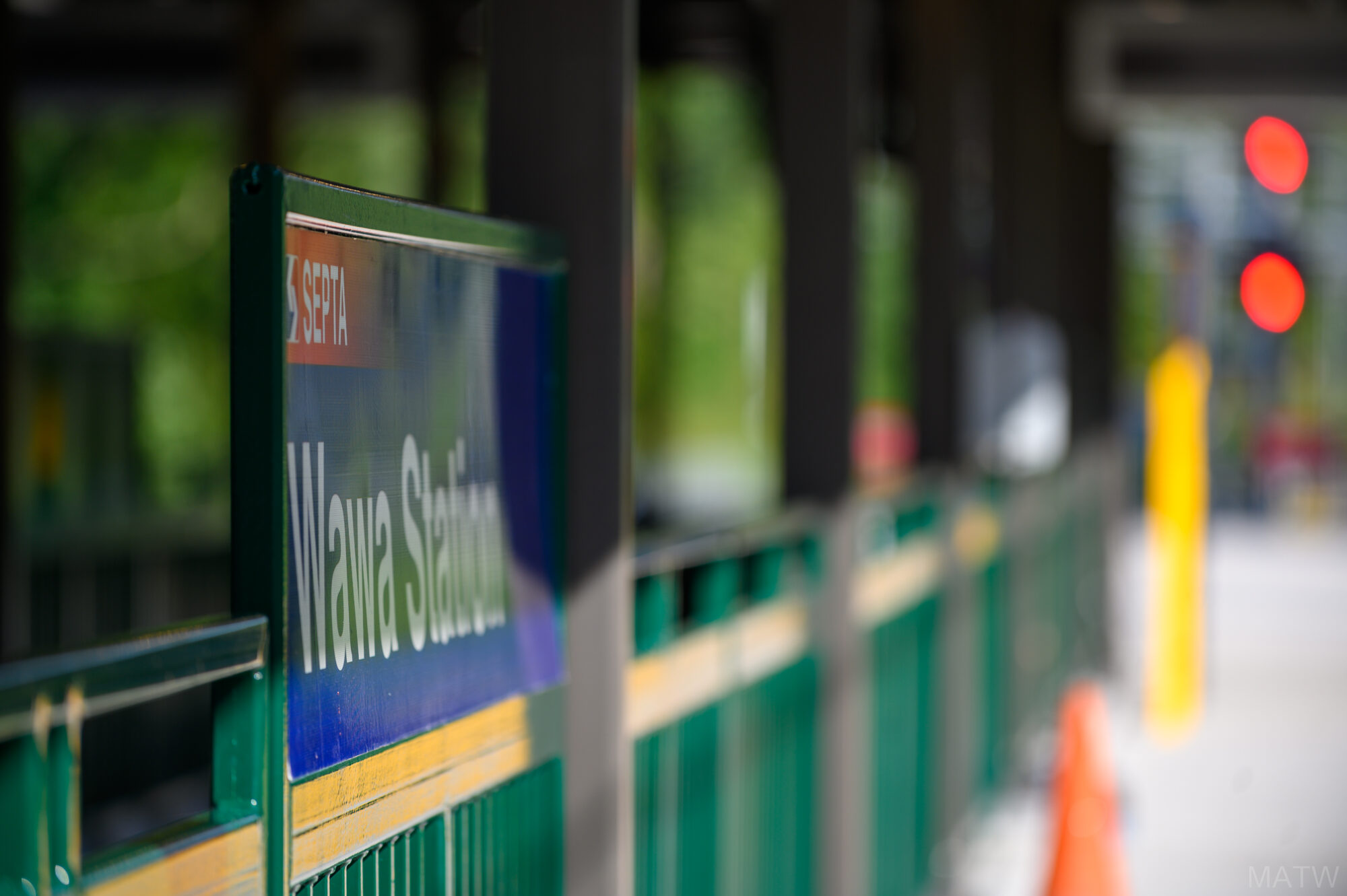SEPTA’s Rt 100 Norristown High Speed Line (a.k.a. the P&W) is one of two remaining interurban lines in the country. Also, it is a very unique line, in the fact that it combines aspects of Light Rail and Heavy Rail. It runs in 1 and 2 car configurations with onboard fare collection like a light rail line, yet has high platforms and 3rd rail like a heavy rail line.
The rt 100 started out as the Philadelphia and Western Railway (P&W), starting service at 6 AM on May 22nd, 1907, between 69th Street Terminal and Strafford. In 1912, the branch to Norristown started service. While the Norristown branch still remains active today, the Strafford branch (which eventually connected with the Pennsylvania Railroad Station in Strafford) was abandoned in 1956. The Right of Way for the Strafford Line is now used as a bike path.
With the branch to Norristown, another service started using the P&W for access to Philadelphia. The Lehigh Valley Transit Company ran its Liberty Bell High Speed Trolley service over the line, running from Allentown to 69th Street Terminal for access to the Market Frankford El. This service started in 1912, and ended in September of 1951.

200 at Hughes Park, November 7, 1971
Collection of Joe Testagrose
Over the years, the line became faster and became more famous. In 1931, Brill Bullet cars were purchased, which increased the travel speed of the line immensely. The Brill Bullets were famous, as they were the first railcars designed in a wind tunnel. These cars, along with the Strafford cars that also ran along the line, served the P&W, which became a part of the Red Arrow Lines and finally the SEPTA rt 100 line, for almost 60 years.

486 at Victory Ave Yard, April 11, 1989
These were former Chicago 6000 series CTA El cars
Collection of Joe Testagrose
When the Bullets and Strafford Cars were literally unable to continue to run along the line, former CTA 6000 series cars were brought in from Chicago to keep the line going until the N5s arrived. One train set, made up of 482 and 483, currently sits in the Victory Avenue Yard. Also, five Market Frankford Line M3s were assigned to the P&W (with a 6th one for spare parts) to keep local service going as well.

Finally, the N5s came, with 451 (now known as 130) first coming in 1991, and rest of the production models were delivered in 1993. Today, the line runs frequent service between 69th Street and Norristown Transportation Center, which was built in 1989. It has 3 types of skip-stop service (Norristown Express, Hughes Park Express, and Norristown Limited). The line isn’t as fast as it used to be, but it still retains a lot of the charm it has had for so many years.
In its 100th year (2007), there are several plans for this line. A new parking garage/intercity bus terminal was built at Norristown Transportation Center, and Gulph Mills Station became a wheelchair accessible. There are plans to extend the route 100 to Valley Forge and King of Prussia, but this project is stagnant right now. Regardless, the route 100 remains a link to the interurban era of the past.
Click here for the all time P&W fleet overview
Click here for our photogallery
Visit these websites for more info on the Route 100:
Current Active Fleet
| Year | Manufacturer | Model | Fleet |
|---|---|---|---|
| 1991 | ABB Group | N5 | 130 (ex 451) |
| 1993 | ABB Group | N5 | 131-155 |
